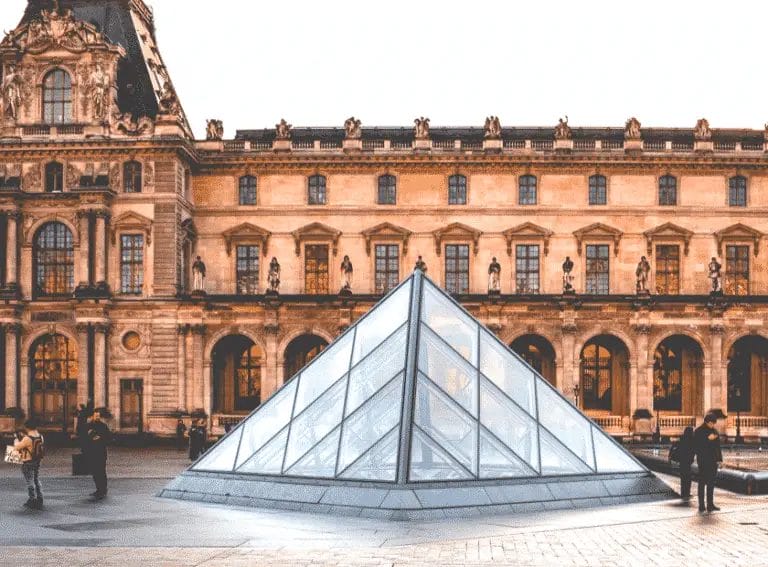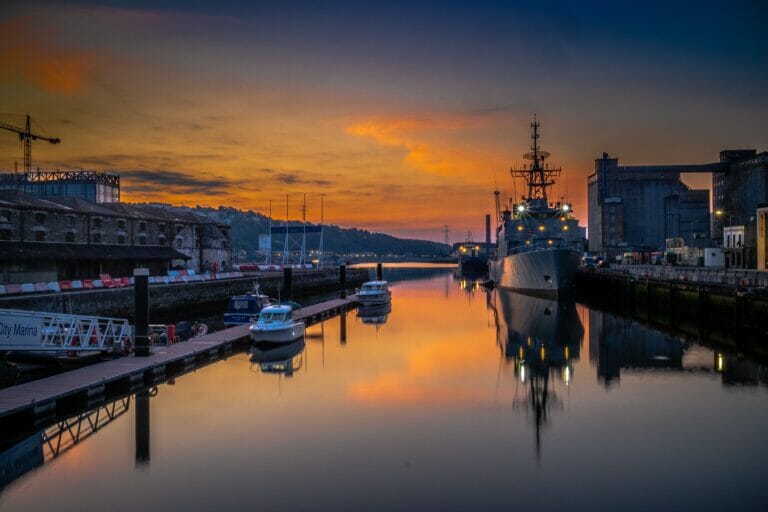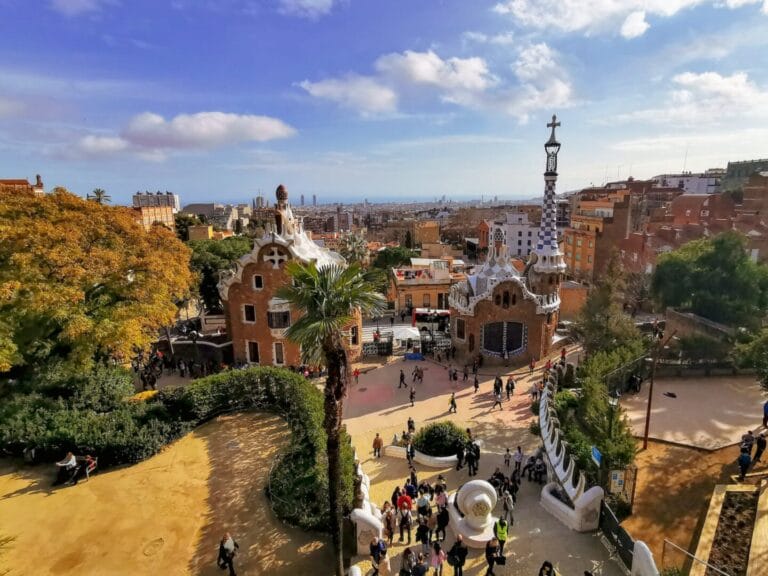20 Best Things to Do in Seville Spain
The capital city of Andalusia is that is rich in Moorish history. This is evident everywhere from the vibrant painted tiles that decorate several buildings, to arches that are shaped like a lipped arch of palaces, and of course the famous Giralda tower which was at one time used as a minaret.
Three of the most popular things connected to Spain can be generally Sevillian: Flamenco, tapas and toros! The best time to visit is in the spring when the fragrance of jasmine or orange blossoms float on the breeze. Then you will be able to experience either the romantic quiet in Semana Santa and the lively partying at The Feria de Abril.
Plan your Summer in Spain
Summer is one one of the best time to visit Spain and it is going to be extremely fun. We have shared all the top 25 places to explore in Summer in Spain.

Let’s look at Seville’s top activities to enjoy in Seville:
1. Seville Cathedral
The massive structure is a small world of its own. You will spend hours gazing at the gorgeous architecture, the relics, and other historical treasures.
With over 80 chapels, it’s the biggest church in the world according to volume. It’s also an official World Heritage site.
There are some traces of the mosque that was once located on the spot, particularly on the Court of the Orange trees located on the north-facing side in which Muslims used to perform ablutions.
The best photo opportunity is the burial site of Christopher Columbus, but there’s an amazing thing to see at every corner.
You can check the tickets for Cathedral from here.
2. La Giralda
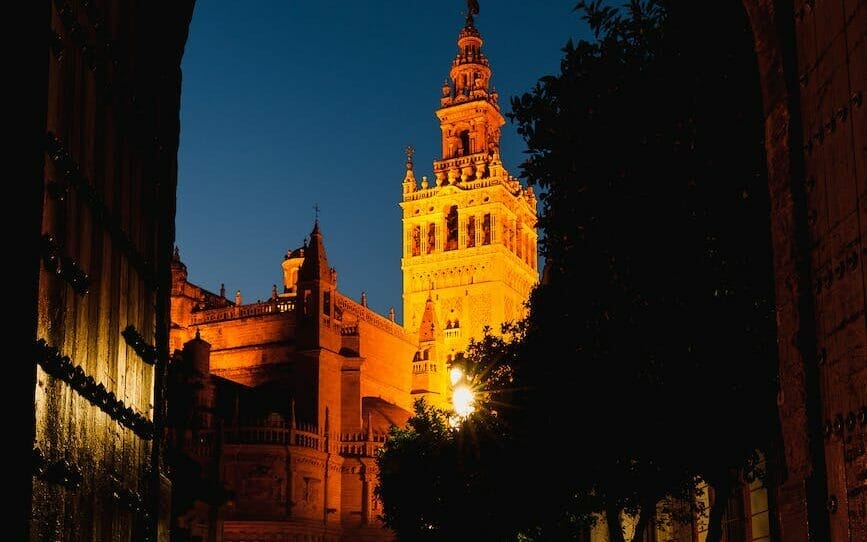
A timeless symbol for Seville The Giralda is the bell-tower located close to the Cathedral It is also possible to buy tickets to both places.
It is believed to have Moorish roots, and is the minaret of the former mosque.
The thing that makes the tower unique is that it has 34 ramps that lead up to the top rather than an escalator.
This was done so that the Muezzin, who was the one leading the prayer call could take his horse up the tower, instead of walking.
To break the monotony of the climb, you can visit regular archeological displays along the way.
At the top, the views are more spectacular than you could ever imagine.
If you are planning to visit Giralda and Cathedral both from inside then we would recommend you to take the Skip The Line ticket for Cathedral and Giralda to save you time there because the waiting time for the queue is minimum 30 minutes and could be more during peak season.
3. Real Alcazar
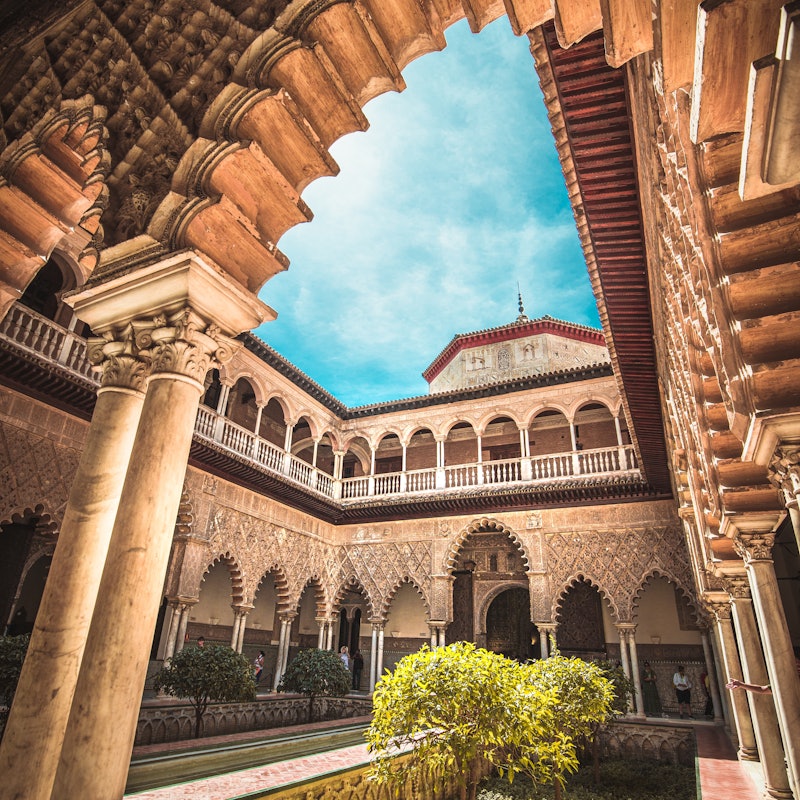
This is a stunning complex of a palace that is still used for those of Spanish royal family. Their chambers state rooms, halls, and chambers are located on the upper levels and are available to view for free if you pay more.
The majority of the complex is built in it’s Mudejar fashion (Moorish-inspired architecture that is used for non-Islamic buildings) and was designed through Pedro the Cruel in the 14th century.
There are a few glimpses of the old Almohad palace located on the Patio del Yeso, for instance.
When you visit, you’ll stroll from the courtyard to the stunning courtyard, gaze up at the ceilings with carved coffered soffits and then be enveloped by the lush vegetation of the lush gardens.
Beautiful views of the gardens are possible at the top of the Grutesco Gallery.
Tip: Reserve the ticket for the Alcazar Skip-The Line Tickets early on this page
4. Plaza de Espana
The massive monument was constructed to commemorate it’s Ibero-American Exposition in 1929 and is situated in Maria Luisa Park.
It’s a semi-circular square surrounded by a canal. It’s also surrounded by a huge, curving palace.
The palace houses some of the city’s administrative structures The main primary reason to visit is to take a stroll under the gallery.
You’ll find busts of significant figures from the nation, but also tiny installations for each province of Spain.
Utilizing traditional Sevillian Azulejos (painted tiles) These displays highlight details like local cuisine and the most famous monuments from each region in the nation.
It’s like a simple geography lesson that will hold your interest for a couple of minutes.
5. Maria Luisa Park
The largest green area in central Seville was originally part of the adjacent San Telmo Palace, dating to the 1500s.
In the latter part of the 19th century, the grounds were given to the town in the late 19th century by Infanta Luisa Fernanda and took its current form following an overhaul in 1911. Maria Luisa is one of parks that offer a delightful delight on every walk whether it’s an attractive sculpture, pond, pavilion or a tiled fountain.
The vast avenues in the park are twin rows of tall palm trees and the main part of the park which is woven with trails that are small is a huge plant garden that has unusual species of plants from all over the world.
6. Triana
Along the right bank of Guadalquivir just opposite the old city, is the Triana neighborhood.
It is an earth-based area of city. which is believed to be responsible for many of the items people identify with Sevillian culture, such as Flamenco, painted clay and ceramics.
The main route to enter can be accessed via Isabel Bridge close to the bullfighting arena.
Then you’ll be at your destination, the Plaza de Altozano, which is home to a widely photographed figure of the flamenco dancer and a “monument to the flamenco art”.
Take a look at the area’s Moorish restoration and baroque architecture , and then go into any of the numerous ceramic and tile shops to purchase authentic Azulejos tiles.
7. Right Bank of the Guadalquivir
Beginning at The Isabel Bridge you can set off on a wonderful walking path along the riverside to The University of Seville.
If it’s a sunny day (so that’s the majority of every day) Seville’s residents can be taking walks or riding bikes, running as well as sitting along the stone walls , looking at the water across to Triana.
You can walk along the riverbank to view what is known as the Plaza de Toros, the 250-year-old bullfighting stadium.
Then there further is farther down is Torre del Oro, an elaborate watchtower that was built during the reign that the Caliphate of Almohad was in power during the 13th century. It’s which is now home to an maritime museum.
8. Tablaos and Flamenco Shows
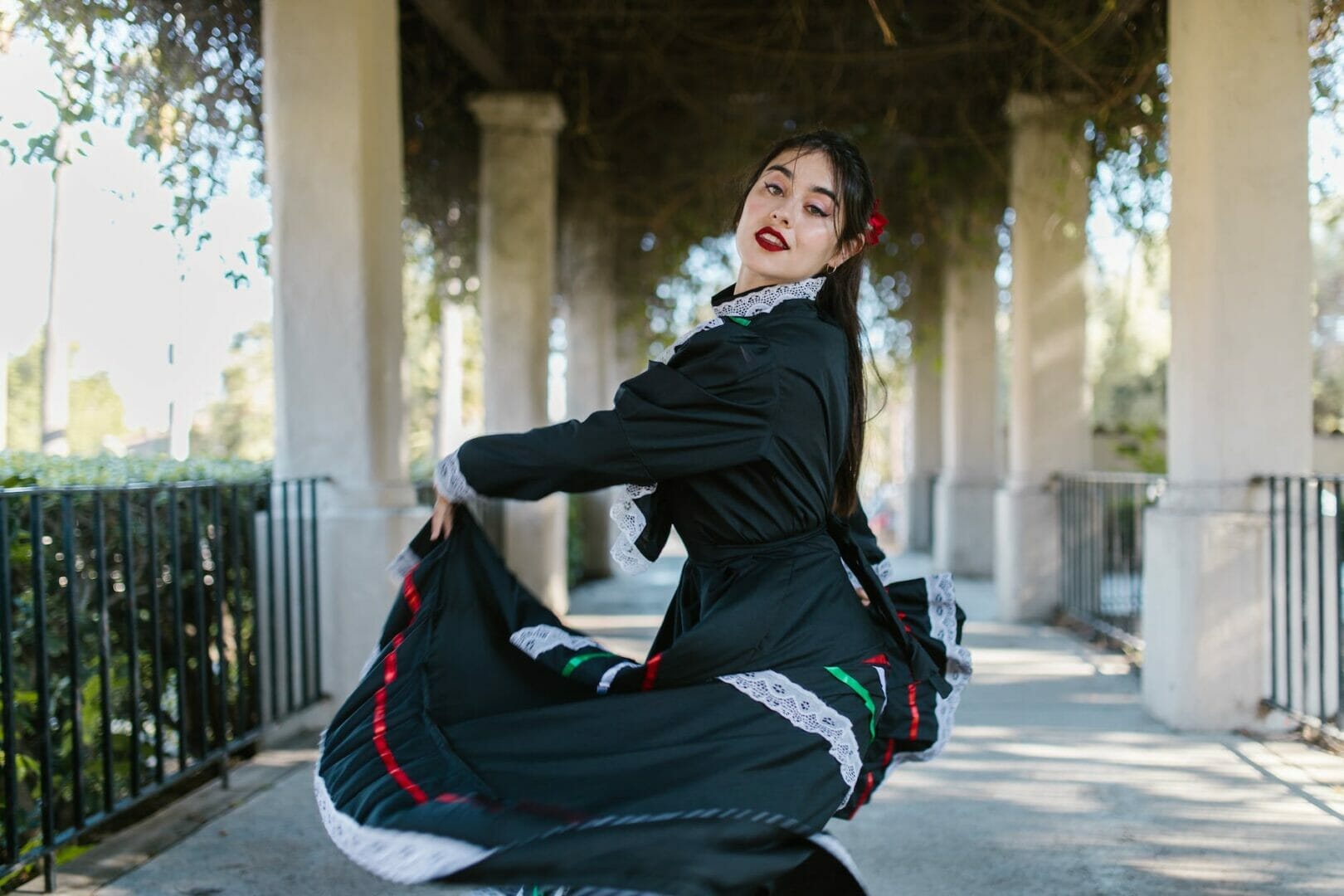
Whatever time of the year, you can be certain of flamenco performances that will be taking place throughout the city in any night.
A tablao can be a great option to enjoy a show that includes live music as well as an eatery or bar service.
If you’re in the vicinity of to the Cathedral Then Tablao El Arenal is an ideal choice, offering two shows a evening (each lasts 90 mins) and the option of tapas, or a full-course meal.
Tourists visiting Seville during the months of spring and autumn will be able to see Penas de Guardia which is a series of events aimed at new or local flamenco talents.
You can book your ticket for Flamenco show from here.
9. Archaeological Museum
This attraction is part of an set-up to commemorate this year’s Ibero-American Exposition, collecting the most significant artefacts of the archeological sites that surround and within the Seville Province.
The most interesting discoveries come dating to those of the Bronze Age: For example that dates back from the eighth century BC is Treasure of El Carombolo.
The hoard was either part of or the indigenous Tartessos Culture that lived on the banks of the Guadalquivir River, or the Phoenicians.
It’s a collection made up of 21 items of jewellery in gold and following the replicas being in display for several years the original pieces were reinstalled in 2012.
10. Museum of Arts and Traditions
As as part of The Exposition is this truly fascinating museum that focuses on Seville’s traditional industries families, customs and households.
You’ll find everyday objects that span the history of Seville such as ceramics dating back to the 16th century, as well as large exhibits of knives and swords made in Seville’s city.
One of the sections guides you through the different workshops related to Seville’s ancient trades, including tile-making metalwork, lacework, lacework and barrel-making for locally produced sherry (fino).
11. Museum of Fine Arts
In the older areas in the town, you’ll notice that the buildings that don’t appear Moorish have an elaborate baroque-style.
This is due to the fact that between the 18th and 17th centuries were periods of immense wealth for Seville and gave birth to a whole movement of culture.
In the Museo de Bellas Artes you will be able to see the painting as well as sculptures of the Sevillian School.
The majority of the work done here is religious in nature and originates from convents and monasteries around the city, which were shut in the 19th century, and moved to this location.
The house is also gorgeous with its many tranquil courtyards
12. Feria de Abril
Southwest of Seville The region to the southwest of Seville, located in Los Remedios, are the fairgrounds that this five-day celebration begins on the Tuesday , and finishing up with fireworks on Sunday.
The scene is enough to take you by surprise Ten thousands of tents are constructed and men and women walk about in traditional costumes.
The women wear the “traje de gitano”, typical flamenco-style dresses in polka dots Many men wear short waistcoats as well as large-brimmed caps.
In the Fair the crowds consume food, drink and dance traditional Sevillanas until the dawn.
In the evening, there’s plenty of entertainment for children at the fairground, including traditional fair rides, horseback rides, and other entertainment.
13. Semana Santa
The Holy Week processions in Seville are among the most famous in Spain.
From Palm Sunday through Easter Sunday, penitents in a gloomy mood will walk through the streets in shoes, robes and somewhat eerie pointed hoods.
These are church brotherhoods that have ties to the city. They will be carrying massive and highly beautiful floats depicting scenes from the Passion or weeping Virgins.
All of this builds towards Maundy Thursday, which is when the central plazas of the city set seats in grandstands and women who attend dress in black.
At night, the procession continue to move through the center until dawn.
14. Italica
Take a bus to the station located at Plaza de Armas and within 30 minutes you’ll arrive at the home for the Roman Emperors Trajan and Hadrian.
Italica is an enormous archaeological site, and the main attraction of which is the amphitheatre.
The arena could seat 25,000 people during its peak You can walk through the tunnels that run beneath the seating areas, and look up at the subterranean structure that is in the heart of the arena.
What would have been the seat of the old city, are the foundations of temples and mansions, where complete mosaics can be observed.
15. Tapas
Seville is home to tapas. The streets and alleyways surrounding The Cathedral, Ayuntamiento building and the riverside have plenty of tapas bars.
The thing that makes it fun is the fact that most of these bars will offer one or two specialties and a night can involve a walk from bar to bar with a delicious dish to sample at every visit (There’s many tours available: list of tapas tours).
This could include patatas bravas (spicy potatoes) Chipirones (deep-fried baby Squid) as well as queso manchego Oxtail stew, cured ham and prawns with garlic.
One sit-down restaurant that is turning heads at the moment is La Brunilda on Calle Galera with exquisitely-presented little dishes that add some modern flair to traditional favourites like ham croquettes and pulpo (octopus).
Additional details: Where to go in Spain
16. Tomb of Christopher Columbus.
The Cathedral’s catafalque is a beautiful work of art in and of itself.
The four monarchs of Spain—Castilla, Leon, Navarra, and Aragon—carry Columbus’ coffin. Each is dressed in a tunic bearing a different coat of arms from one of the kingdoms that make up Spain.
17. See a Flamenco Dance Museum
You have already Included a flamenco performance on your itinerary if you’re seeking for romantic things to do in Seville or things to do in Seville at night.Flamenco dance is a form of gypsy heritage with roots in Indian, Arabic, and Spanish culture that has its origins in Andalusia, southern Spain.The song, the guitar, and the dancing are the main components of a flamenco performance.
How about exploring the Flamenco Dance Museum to know more about the dance.
You can get the ticket for Flamenco Dance Museum from here.
18. Climb Metropol Parasol
The cost of ascending the Metropol Parasol is €3. (but the price includes a free drink).
Here, you’ll discover a trail circling the building that follows its contours and provides excellent vistas of both the city and the layout of the artwork. Going up is worthwhile if you want to fully appreciate this wonderful site.
19. Day Trip to Cordoba
Train travel from Seville to Cordoba takes only 45 minutes! The magnificent Mezquita is this place’s massive attraction.
It’s a stunning Catholic cathedral that was constructed atop a mosque that itself was atop a Christina church.
A central prayer hall with double arches, columns, and soaring ceilings is paired with numerous elaborate Christian chapels in this “mosque-cathedral,” which is completely encircled by huge decorative doors.
20. Experience Easter Pageantry
Seville observes a few unique days or weeks each year to commemorate or celebrate events.
Semana Santa, the Holy Week preceding Easter, is one of them. Seville is renowned for its ornate parades that wind through the city’s streets.
As one of the greatest and most well-known Semana Santa celebrations in Spain, Seville draws both tourists from Spain and around the world.
The experience is very reasonable while still not being overly crowded.
All during the week, there are processions. At some point during their path, each procession wanders through the cathedral.



